In a former blog I reported howto recover a Windows 2003 Servers with Data Protector. As Windows Server 2008 R2 is more and more used in the data center, I show within this blog howto recover a Windows Server 2008 R2 with Data Protector using the function Enhanced Automated Disaster Recovery.
Preparation:
Within this howto the Enhanced Automated Disaster Recovery test is performed using a virtual machine. The howto is identical for physical and virtual maschines. As preparation a new virtual machine was installed, a full backup and some incremental backups were done.
Please see all pictures as an example (machine names were replaced or blurred).
For this article a blocksize of 64K was used on the tape devices!!!
The article was created with the environemnt in Januar 2011 and valid for the mentioned products and versions only (patches from December and additional SSP applied). HP will/may include the SSP in the next patch, the article has to be seen as an example. The usage of Cluster Shared Volumes and Virtual Hard Disks is not covered in this howto.
Goal of this documentation:
The goal of this documentation is to show one of different ways for disaster recovery with Data Protector 6.11, in this article it is shown for Windows 2008 R2. The howto can be seen as an example for different other disaster recovery processes.
Usage:
The disaster recovery process normally must be started using the MFC GUI on the cell server, as not all functions may available when not doing so; so Enhanced Automated Disaster Recovery ist not available when GUI is executed on a management station, the JavaGUI was not tested. For a successfull EADR Prozess it might be usefull when Windows 2008 R2 is installed on the cell server, within this articel I show a different way.
Prerequsites Microsoft:
- Download WAIK 2.0 –> http://www.microsoft.com/downloads/en/details.aspx?FamilyID=696dd665-9f76-4177-a811-39c26d3b3b34
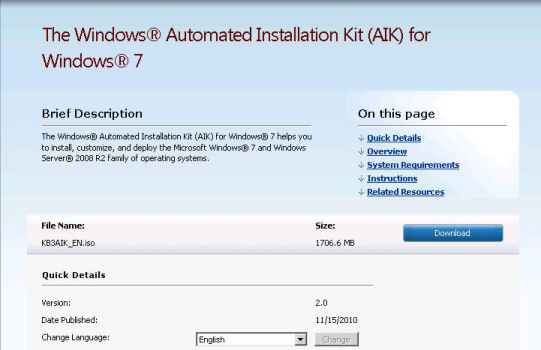
- Uninstall all former versions of WAIK.
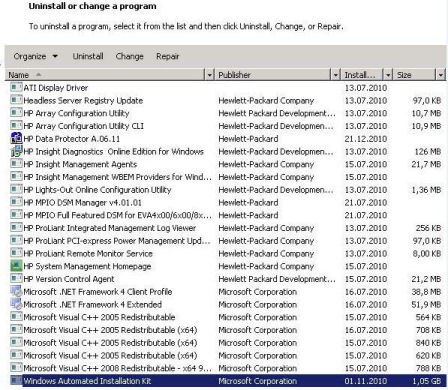
- Unpack the ISO file (i.e. using winrar – www.rarlabs.com). Start the installation of the WAIK 2.0 for Windows 7 and Windows Server 2008 R2 using StartCD.exe
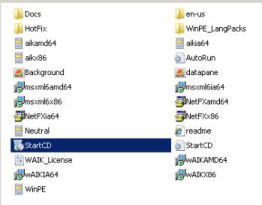
- Select Windows AIK Setup
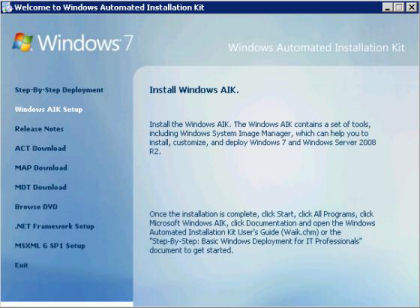
- Select Next.
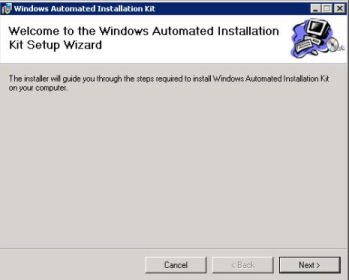
- Accept the license agreement.
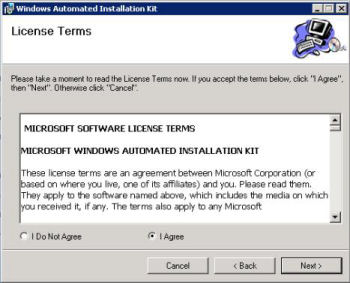
- Select the installation folder.
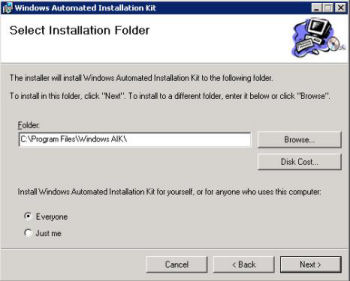
- Start the installation using Next.
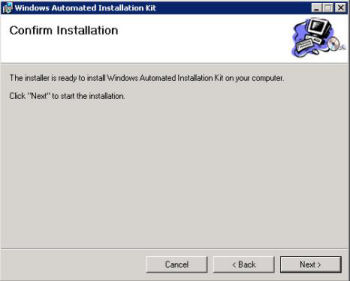
- Installation starts.
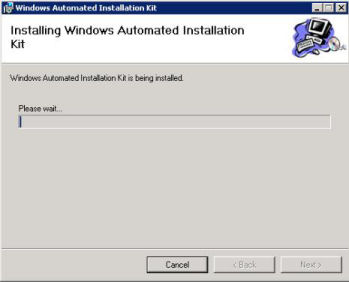
- Completion.
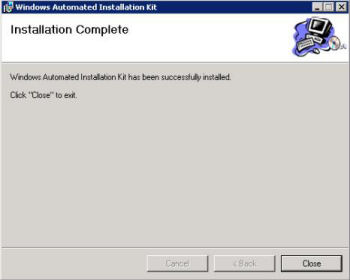
Prerequisites Data Protector:
Install the current pacthes for Data Protector on the cell server and on the client to be used, during the test the following patches were applied (Data Protector 6.11 Patches December 2010): DPWIN_00475 – Core, DPWIN_00476 – CS, DPWIN_0077 – CC, DPWIN_00479 – MA and DPWIN_00481 – DA.
In addition you need to log a case to get the Site Specific Patch SSPNT611_032. This patch is not available for the commons, to get this patch you need a valid support contract for Data Protector. The SSP must be installed on all Windows machines with installed module AUTODR. In this article the SSP was used on the test machine only. Please also read the included Textfile, you will find the procedure how to apply this patch.
After you extracted the SSP open the readme.pdf (technical whitepaper) as additional requirements are listed here to get the EADR process running.
Copy OMNIHOME\bin\drim to a safe location and move the files from the SSP to OMNIHOME\bin\drim (OMNIHOME = installation folder Data Protector – i.e.: c:\program files\omniback).
- Add a drive mapping to the system reserved volume or mount it into a NTFS folder. In our example we add drive Z:.
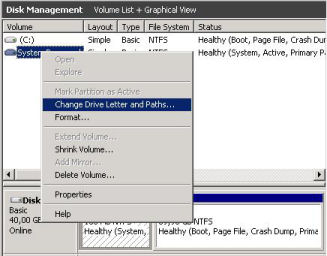
- A new backup specification was created using the following options:
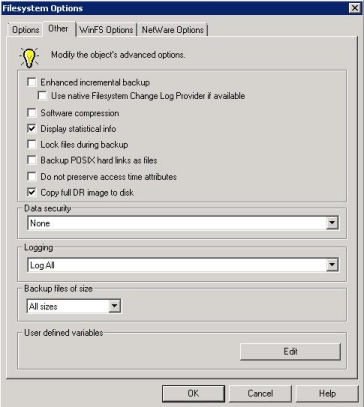
- Options part 2
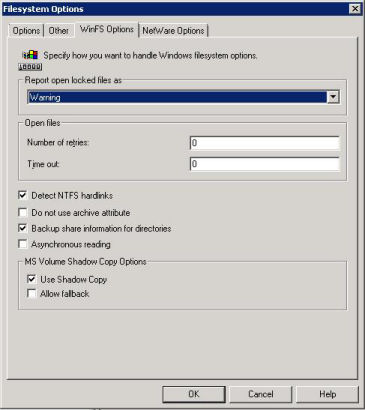
- Start a full backup including all volumes – CONFIGURATION, C:, …, Z: (system reserved volume), the backup should run without any errors.
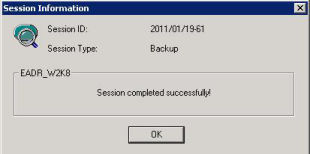
Restore part 1:
Normally the EADR process for Windows Server 2008 should run on the cell server where Windows 2008 R2 and the WAIK 2.0 is installed too. As an alternative in our test a different system with Windows 2008 R2 Server, installed WAIK 2.0 and installed Data Protector GUI was used.
- Change to restore view and select tasks. Select the client to be recovered ans select the option Enhanced Automated Disaster Recovery.
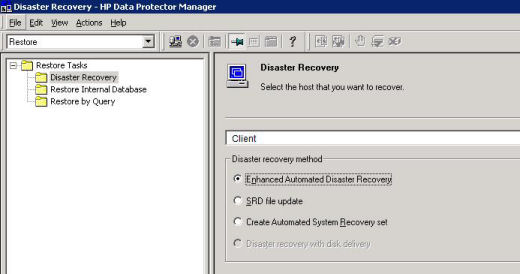
- In the next screen the volumes involved in the DR process are shown, you can define the versions to be restored. There must be a version shown here, otherwise DR would not work. When starting the EADR process under Windows 2003, the versions are not listed, the DR cannot be started.
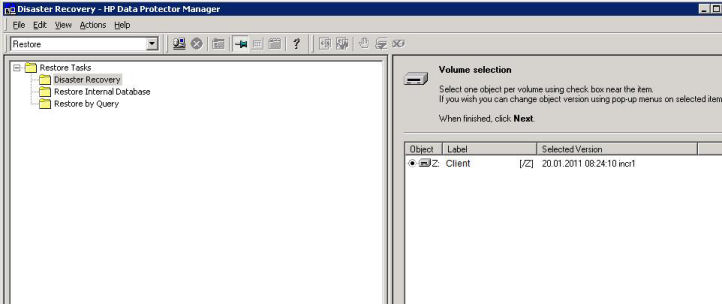
- With right-clicking select the needed version for the restore and repeat the steps for all remaining volumes.
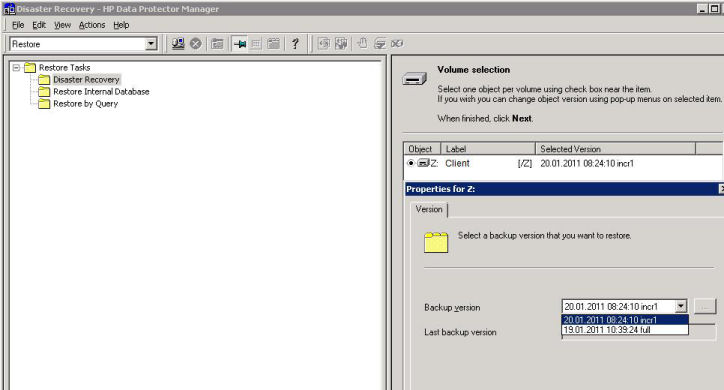
- After you selected the volumes for the restore you have to select the image file, this can be generated using a restore or you can select an exisiting image file. In our example the image file was generated during the backup, this was copied from OMNIHOME\Config\Server\dr\p1s to the server we are using in our example, however you could also select a network path (this did not work in our environment as some firewalls are installed.).
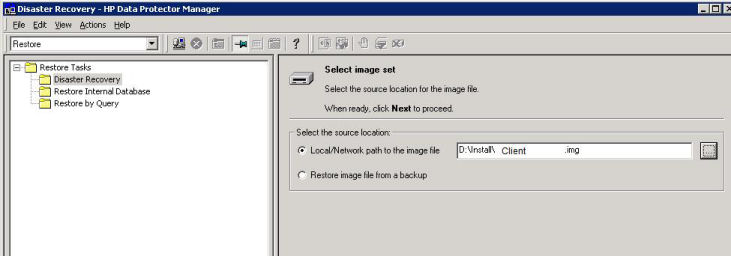
- Now the installation folder for the ISO images needs to be selected and in addition the path to the installed WAIK, as from this folder the needed files are used. You may add additional drivers to be injected in the ISO file. Hint: With Data Protector 6.2 it becomes possible to use EADR with changed hardware and P2V.
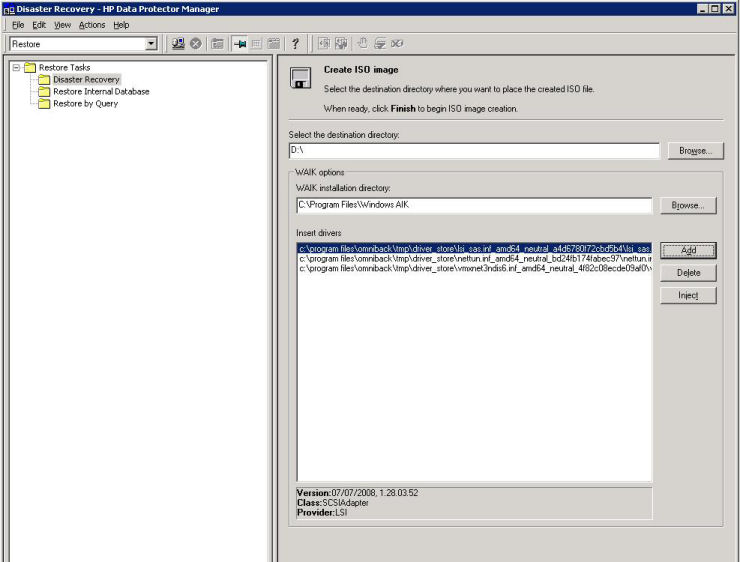
- With Finish the ISO images will be created, this could take up to 15 minutes and is slower as it is the case for Windows 2003.
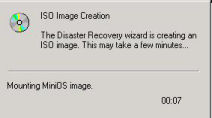
- At the end a message should be shown.

Restore part 2:
With the generated ISO file you could burn a CD (physical server), in our case the file was copied to the ESX host.
During the DR process the user DRM$ADMIN has to be added as an admin within Data Protector.
Please keep in mind to have free tape drives befor you start the restore.
If you recover within a virtualized environment, copy the ISO file onto the ESX host, as the destination select the same folder where the virtual machin is installed. Add the ISO file as CDROM drive for the virtual machine, make sure you have created a new disk and you use the identical configuration.
Make sure the the server to be recovered can lease a valid IP address from a DHCP server, if no IP address was assigned during the DR process the client will try to use direct attached drives for the restore. During the test we created a scope within DHCP server and reserved a IP address using the MAC address.
- During boot process press F12 to start DR.
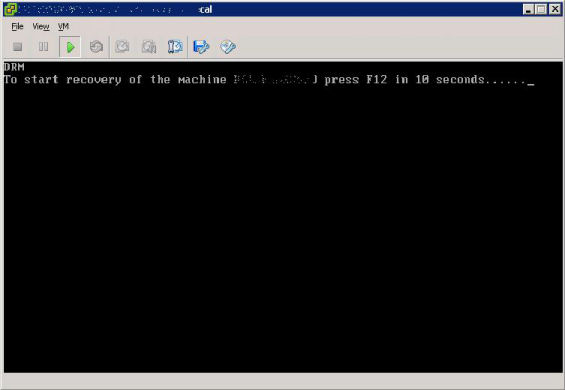
- Windows is starting and is loading the files.
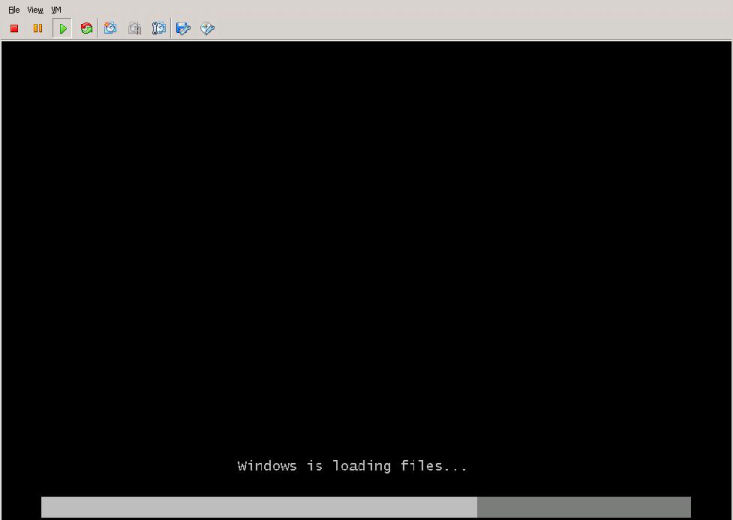
- Windows is starting.
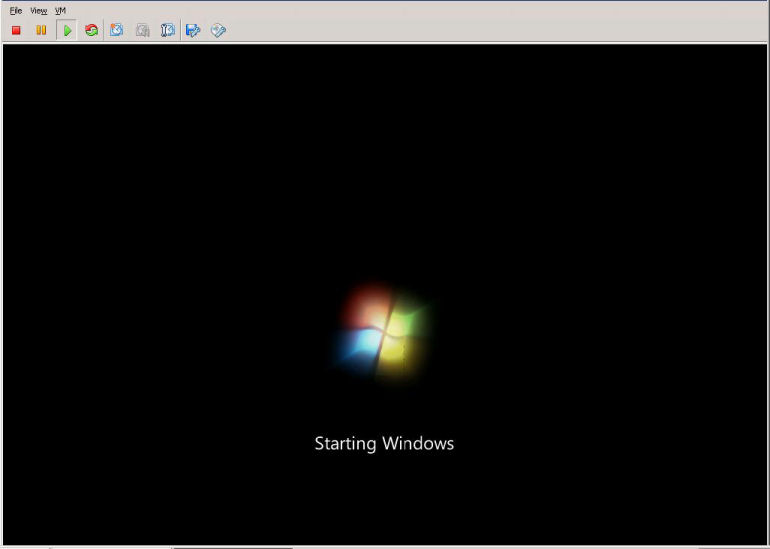
- In DRM shell the network is started.
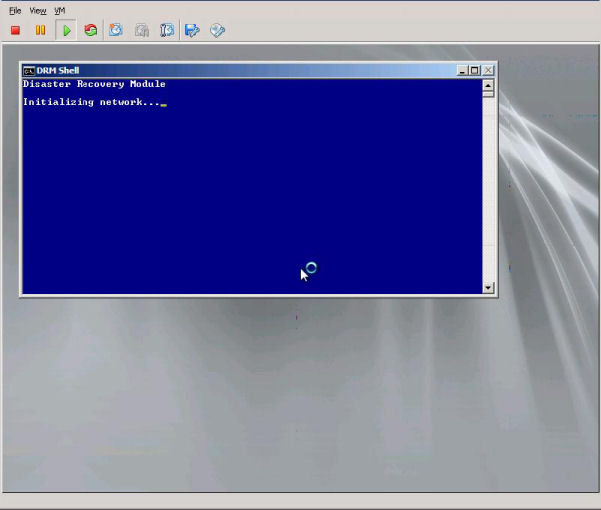
- Other steps are done.
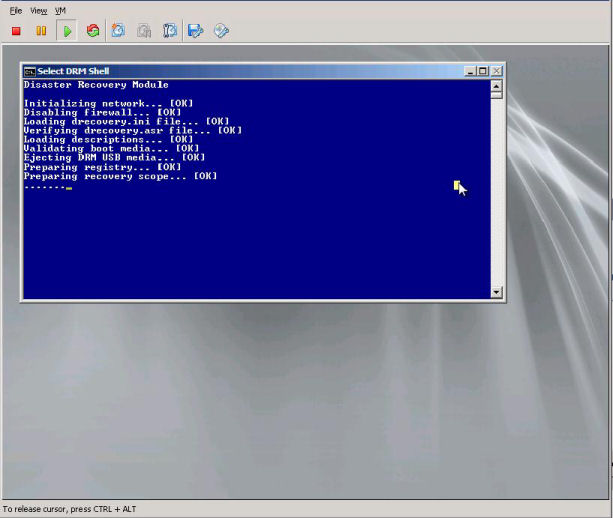
- Select the recovery mode – in our case number 4 – Full Recovery.
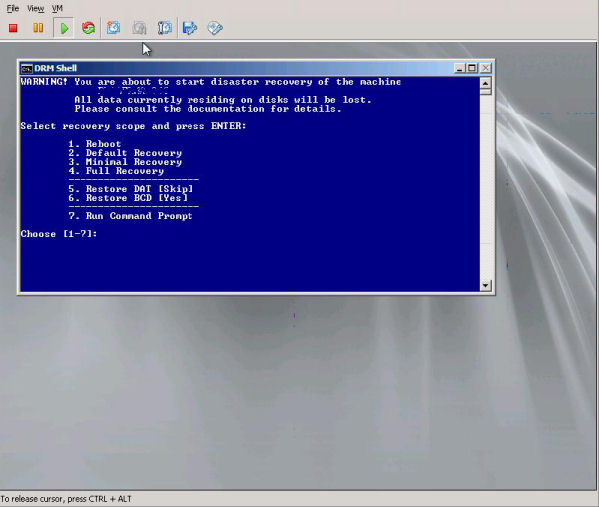
- The disks are prepared.
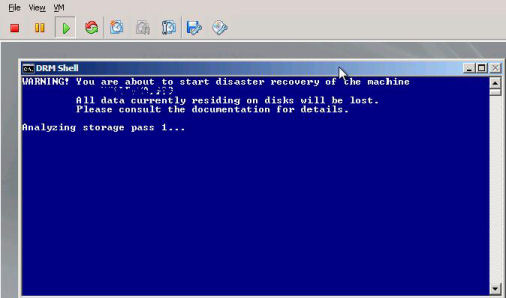
- Continued.
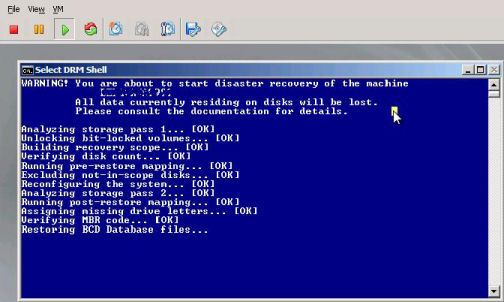
- The process hands over to phase 2 of the DR process.
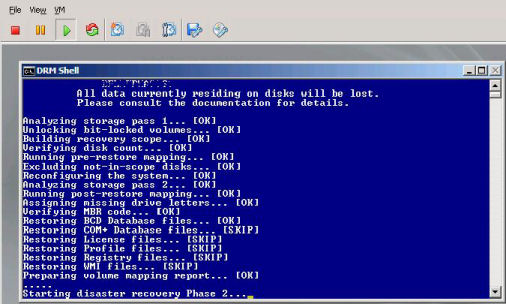
- The SRD file is searched (with DP 6.2 it becomes possible to start the DR process using USB devices.).
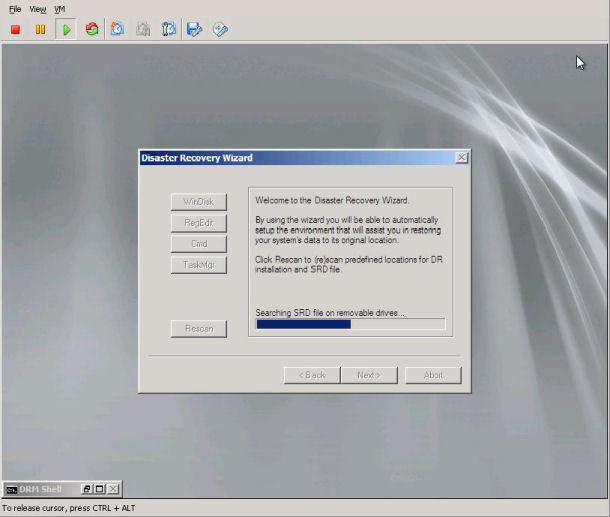
- Start the restore with Finish.
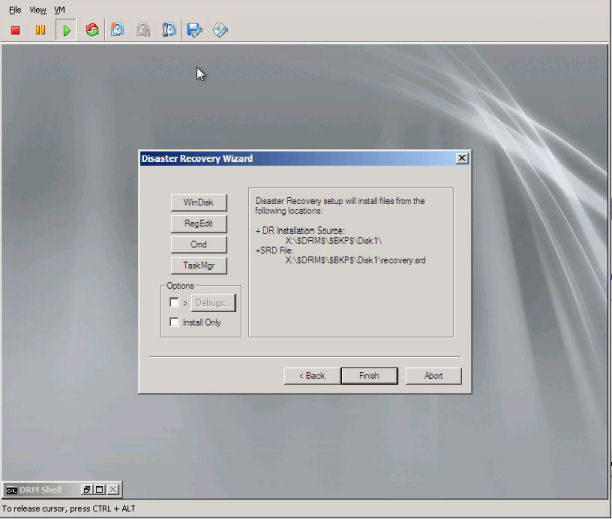
- The Data Protector client is installed.
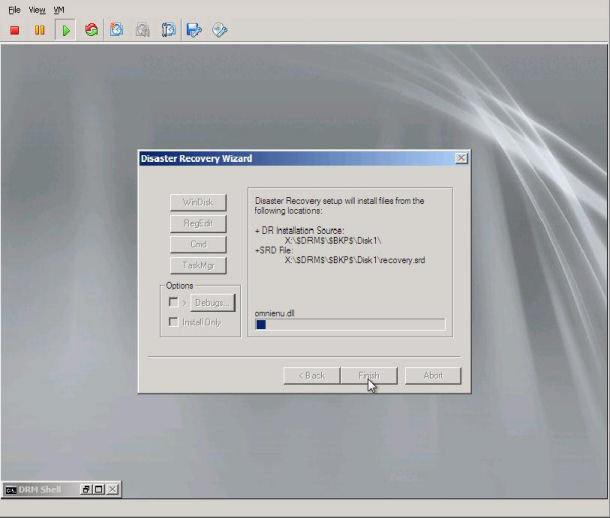
- The restore starts.
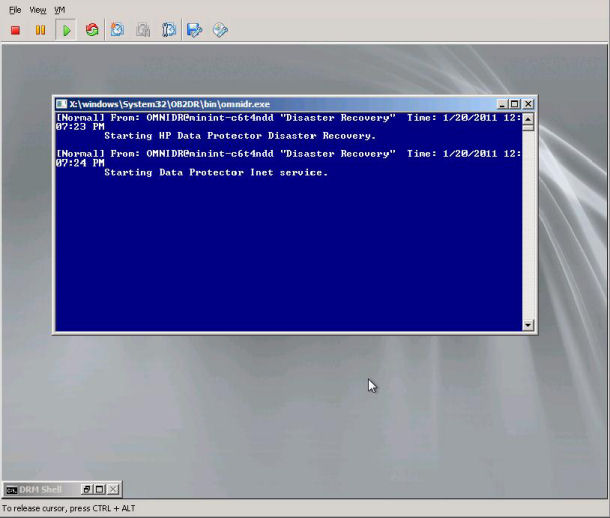
- Restore continued.
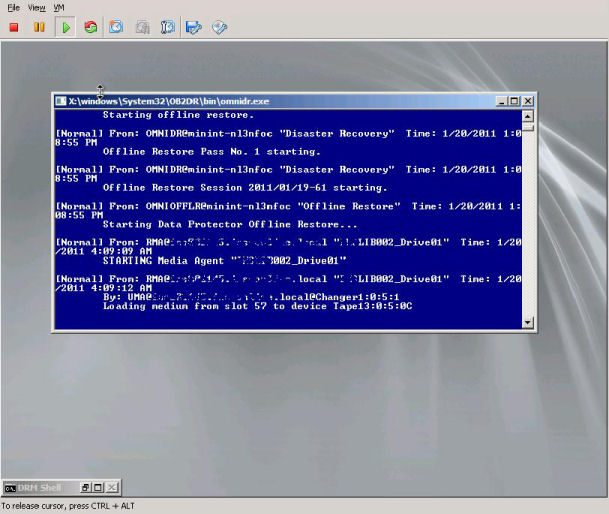
- Restore continued.
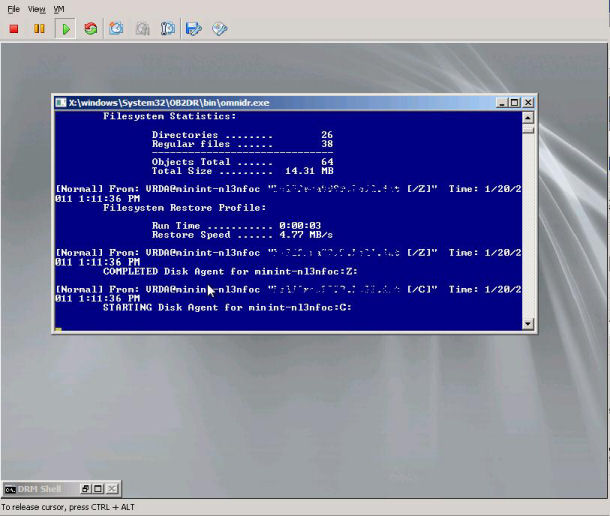
- Restore continued.
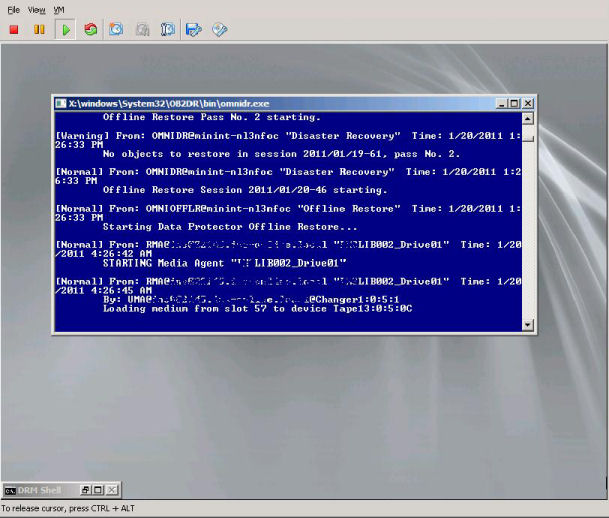
- Execution of tasks after the restore.
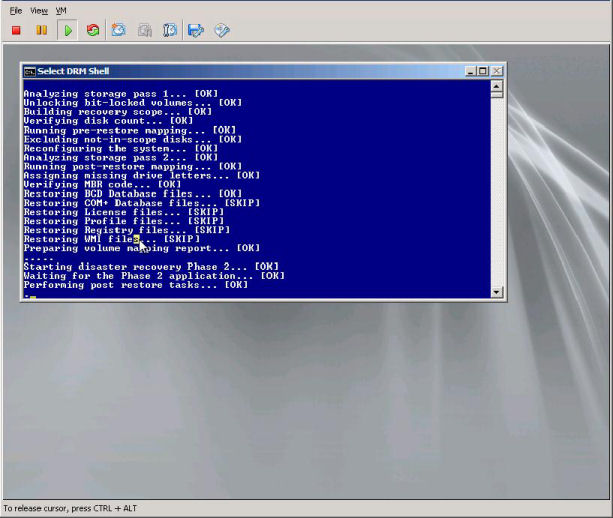
- After the restore the server will be rebooted.
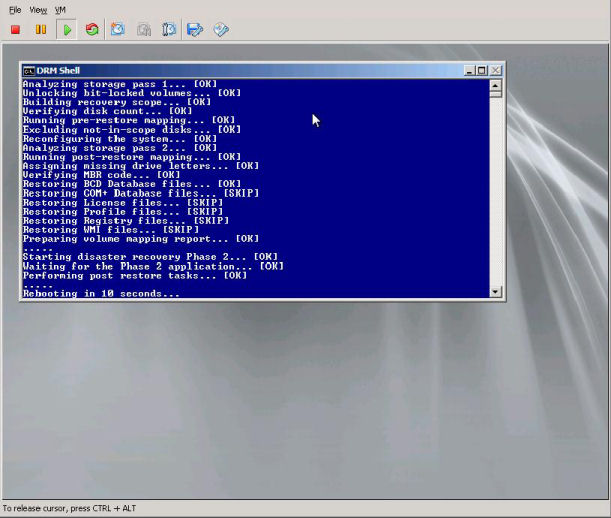
- The recovered Windows 2008 R2 is started again.
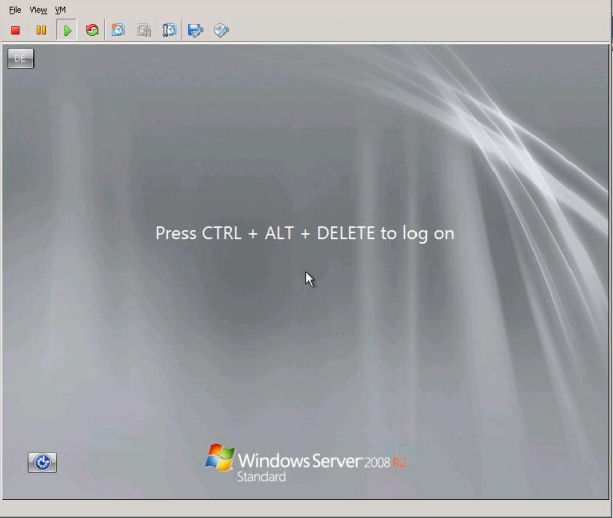
After completion the eventlogs were searched for any errors, no problems found.
Hi Daniel,
Yes, During process I tried to ping cell server . but it failed. I assigned IP adress manuall and then pinged Cell Manager. It was working.
But full DR failed. I have an open case with HP- but they say EADR with VM is not supported.
Any clues?
Thanks
Hi,
this might be the case for DP6.11. When do you plan to do the upgrade (DP6.11 support will end end of April).
Best regards
Daniel
Hi Daniel,
ich würde EADR gerne ausprobieren.
Wir haben Version 7.0, aber im Cell-Manager ist der Knoten “Disaster Recovery” nicht vorhanden.
Gibt es für Dataprotector 7 eine Anleitung?
Würde ADK statt WAIK für den Build von Winpe auch funktionieren?
Danke
Hi,
Soweit ich weiß funktioniert das ADK nur für W2012. Für das Recovery von W2K8 muss das WAIK genutzt werden. Wenn Du das auf dem Cell Server installierst, die Sicherung der Clients über das Automated Disaster Recovery Modul durchführst und die GUI dann über den Cell Server aufrufst, dann sollte EADR auch funktionieren. Ansonsten kannst du in der Docu von DP noch Details finden.
Grüße
Daniel
Hallo Daniel,
da steckt eine gewisse Logik dahinter …
Ich nehme dann das WAIK 3.0 (3.1) für 2008 R2.
Übrigens – fast vergessen: Toller Artikel und vielen Dank.
Gruß
I have HP DP 7.0 And I am trying EADr fro Windows 2008 Server R2. I have created ISO image and burnt it on a CD.
I am in Recovery phase now. I am getting below error:
Cell manager is not responding
Attempting offline recovery
RMA host brcpcbkpwp01 is not responding
Switching to local restore
Cannot Copy X:\Windows\Temp\inet.exe
to
X:\Windows\System32\OB2DR\bin\omniinet.exe
Please verify that the destination location is writable, that there is enought space on the destination drive and the write target is not locked in any way. Do you want to continue copying Disaster Recovery files?
Hi Simran,
Yes, this warning is popped up. Continue with DR and respond with yes.
If you want to check why online recovery is not working- check pinging cell managed from mini os before start of restore. If needed, make manual entries for network configuration in hosts file.
Hi,
Is it possible to do EADR restores to Windows 2008 R2 clients using a Linux cell server? It would seem to be problematic since the iso creation needs the WAIK toolkit and Linux won’t be able to accomodate that. Thanks.
Dave
Hi David,
yes, it would be possible, but you would need at least on Windows client with the installed ADK/WAIK.
Best regards
Daniel